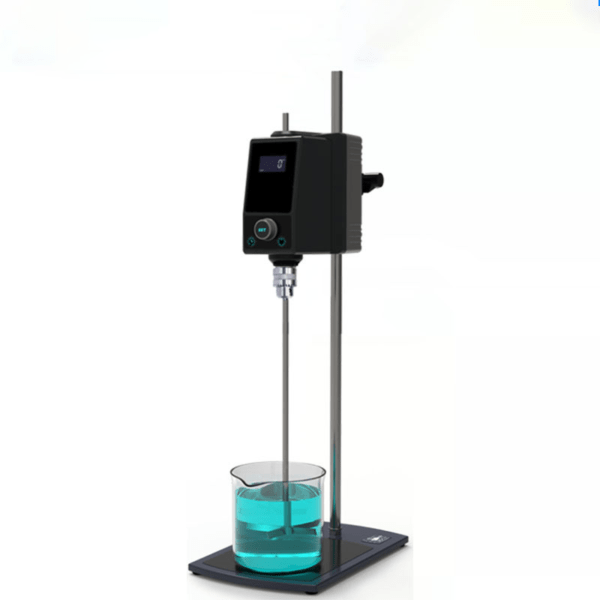In any laboratory setting, whether you’re conducting chemical synthesis, biological experiments, or material research, having the right tool is essential. Among the equipment that ensures efficient processing, the overhead stirrer stands out. However, selecting the appropriate overhead stirrer capacity can be tricky. It’s essential to understand how different stirrer capacities affect your experiments, as this choice can directly influence the results and efficiency of your work.
The overhead stirrer capacity refers to the amount of liquid or the maximum viscosity that a stirrer can handle. This aspect is crucial because it determines how effectively your stirrer will mix substances. If the capacity is too low for your needs, the stirrer may struggle to agitate the solution properly, leading to incomplete mixing. Conversely, choosing a stirrer with too high a capacity can result in wasted energy and unnecessary power consumption, or even cause the stirrer to be overpowered for the application.

Why Stirrer Capacity Matters in Mixing Efficiency
The right overhead stirrer capacity ensures that your mixing process is both efficient and consistent. If the stirrer isn’t large enough for the required task, it can overheat, fail to create the necessary agitation, and lead to inconsistent results. On the other hand, using a stirrer with an excessive capacity in a small-scale experiment can be inefficient and lead to splashing or breakage, especially in delicate processes.
When choosing the ideal stirrer, two critical factors should be considered: the viscosity and the volume of the materials you’re working with. Higher-viscosity materials require more torque, and larger volumes need greater stirring power to ensure a homogeneous mix. This is where knowing the correct overhead stirrer capacity becomes crucial.
How to Choose the Right Overhead Stirrer Capacity
Selecting the optimal overhead stirrer capacity for your laboratory involves assessing your specific needs. First, evaluate the typical volume of liquid or materials you stir and their viscosity. This will help you determine whether a small or large capacity is necessary for your work.
For instance, labs working with large volumes of low-viscosity solutions may need stirrers with higher capacities to ensure efficient mixing. Alternatively, if you’re mixing highly viscous materials, a stirrer with adequate torque and power is essential. If your work involves a wide variety of materials or tasks, consider investing in a stirrer with an adjustable capacity, which provides flexibility for different applications. Explore an overhead stirrer with adjustable capacity here.
Practical Implications and Benefits
The right overhead stirrer capacity can streamline your laboratory work, saving time and reducing the chances of error. For instance, chemical researchers can benefit from faster reaction times with appropriately selected stirrers, while labs working with biological materials can maintain precision in stirring to avoid damaging sensitive samples.
Additionally, selecting the right stirrer capacity ensures that you get consistent, reliable results in every experiment. Whether you’re working with liquids, powders, or emulsions, matching the stirrer to the specific demands of your task leads to more efficient workflows and better overall outcomes.
To get a clearer picture of the performance of overhead stirrers, consider viewing real-world demonstrations. You can see how adjusting the stirrer capacity affects efficiency and results in practice. Check out a demonstration video of our stirrers in action here.
In conclusion, the importance of selecting the correct overhead stirrer capacity cannot be overstated. Ensuring that your stirrer can handle the specific requirements of your experiments—whether it’s the volume, viscosity, or torque needed—will lead to more accurate and reliable results. By considering these factors, you can optimize your lab’s performance and reduce unnecessary costs. Remember, choosing the right stirrer is about more than just power; it’s about ensuring precision, efficiency, and long-term reliability for your lab processes.



